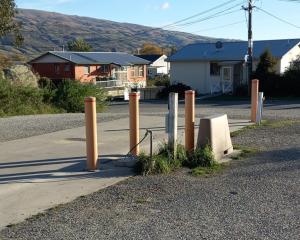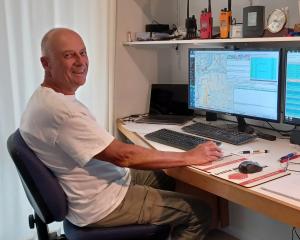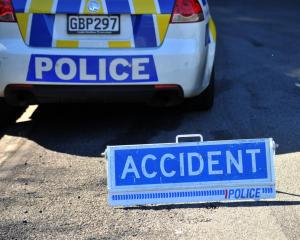
Project AF8 - initiated last year to bring local, regional and national organisations together to produce a robust emergency response following an Alpine Fault rupture - has been holding one-day workshops around the South Island for the past fortnight.
The project is a Ministry of Civil Defence & Emergency Management initiative and is being led by Emergency Management Southland.
The workshops use the scenario of a magnitude-8.2 Alpine Fault earthquake to understand the immediate consequences and plan for the first week of response.
Project AF8 science leader Dr Caroline Orchiston, of the University of Otago, said historically the Alpine Fault ruptured every 300 years and the most recent rupture was in 1717.
''There is a 30% to 50% likelihood of a significant Alpine earthquake in the next 50 years and 85% likelihood in the next 100 years.
''The scenario being used for the project is based on a 400km section of the Alpine Fault rupturing, generating an earthquake ... The shaking would continue for more than five minutes in many areas, causing casualties, damaging buildings and infrastructure, sparking landslides and liquefaction hundreds of kilometres from the quake's epicentre. The whole of the South Island, and the south of the North Island, will experience shaking and varying degrees of damage.
''Older and taller buildings will be vulnerable to shaking, and infrastructure of all sorts will be compromised in much of the South Island,'' Dr Orchiston said.
Project AF8 programme manager Jon Mitchell said rapidly meeting the needs of injured and vulnerable people, getting them to safety and providing them with ongoing support was a primary focus of the workshops.
''A lot of communities will be isolated, without water, electricity and other essential services for days or weeks - some for longer periods.
''Support will have to come from less affected parts of the South Island, the North Island and from off-shore.
''Every region in the South Island would be affected by an Alpine Fault earthquake to some extent.''
Modelling showed the most damage would occur on the West Coast, Fiordland, in western parts of Otago and Canterbury nearer the Alps, as well as in the Marlborough, Nelson and Tasman districts.
''The engagement we are achieving in the workshops reflects the real desire to be as well prepared as we possibly can be,'' Mr Mitchell said.
Emergency Management Southland regional manager Angus McKay said the workshops had a ''sharper focus'' after the Kaikoura earthquake and were providing an immediate and longer-term benefit to planning, preparedness and risk reduction for a large-scale, complex emergency.
Mr Mitchell said after the workshops a co-ordinated South Island Alpine Fault Earthquake Response (Safer) plan would be developed.
Comments
Well Cull had better get a hurry up on and get those rotten power poles, mud tanks, pumping stations and drains fixed. As well as any other hidden defects he or the DCC might be hiding. He might have to request that the local hardware stores procure some batteries torches and possibly some alternative cooking equipment because without power poles there is no power supplied to the house. I get it now thats why the Delta or the DCC don't hold strategic spares for the cities generators, pointless running a generator if you can't distribute the electricity it creates .













